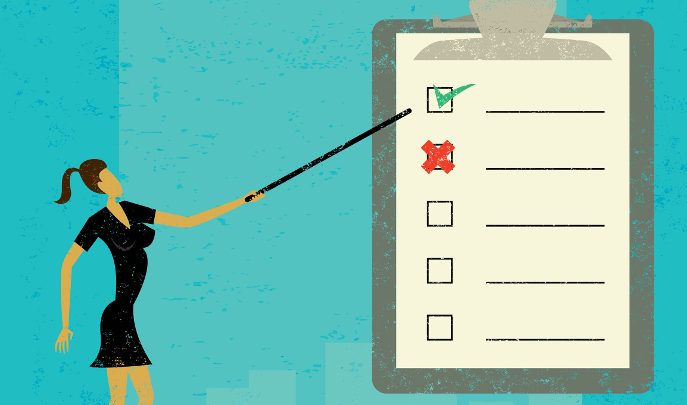If You Have More Than Five Employees You Need To Write A Health And Safety Policy – Here’s How

Your policy shouldn’t be difficult; it simply needs to reflect what you do and how to manage it

- by Laura West

A health and safety policy is a document that will describe how you intend to deal with health and safety within your settings – ie issues that affect what you do and how you carry out your work.
It will let your staff and others know about your commitment to health and safety. Your health and safety policy does not need to be complicated or time-consuming, but it should state clearly who is responsible for what, and when and how things happen across your organisation.
When do I need one? If you have five employees or more it is a legal requirement to have a health and safety policy in writing; however, if you have fewer than five employees, you do not need to have it written down.
How do I write one? Generally, most businesses set out their policies into three sections:
• Policy statement • Responsibility section • Arrangement section.
Policy statement
This is also sometimes known as a General Statement of intent. It sets out your commitment to managing the health and safety aspects of your business effectively, and states what you want to achieve. Your Policy statement should inform people about the policy itself, your safety aims and objectives, and your commitment to ensuring the health, safety and welfare of all employees, as well as that of people not in your employ, eg contractors or members of the public.
The Policy statement by law must be signed by the director in charge of health and safety within your business. In many cases this will be the managing director. The statement should be reviewed and re-signed annually.
Responsibility section
In this section what you need to do is identify people’s roles and responsibilities for specific actions and/or tasks within your organisation, ie who is the person responsible for writing your risk assessments or carrying out your checks regarding things like fire safety, security or equipment, etc.
As an employer you should appoint someone competent with the correct knowledge and skills to manage the health and safety requirements of your organisation. If you are a small setting it may well be that the same person is responsible for all roles. In either case, the person or persons should be identified and what they are responsible for needs to be documented.
Remember to make sure that those given the responsibility understand what it is you are asking them to do. It is also worth remembering that under health and safety legislation, all employees have a duty to take reasonable care for the health and safety of themselves and others who may be affected by their acts or omissions at work.
There are several ways in which this section can be written. In a smaller organisation with not many levels of management, a simple list would suffice, but the most popular approach is to use an organisational chart. An organisational chart generally shows the hierarchy of seniority within your organisation and should state employees’ name, job title and their duties towards health and safety.
Arrangement section
This is the final section of your health and safety policy, and is generally the largest. It should detail how you intend to achieve your aims and meet the commitments you have made in your health and safety Policy statement.
The arrangements give information to people regarding how you intend to manage a particular task or aspect – this should also include information on how you are going to eliminate or reduce the risk of hazards in your workplace. It should detail who the allocated person is for each element, or the position they hold within your organisation. They are then responsible to ensure that it takes place.
A hazard is something within your business that could potentially cause harm to people, such as electricity or chemicals – eg cleaning products that fall under COSHH (Control of Substances Hazardous to Health) regulations. Risk in relation to occupational safety and health is “the likelihood that a person may be harmed or suffer adverse health effects if they are exposed to a hazard”.
The arrangements will vary from company to company, but some examples that may be included are:
• General work environment • Manual handling • First aid procedure and provision • Alcohol and drug policy • Risk assessment procedure • Fire safety • Electrical safety • Chemicals – managing them safely under COSHH regulations • Provision of PPE (Personal Protective Equipment).
Additional arrangements
These are additional actions you can take to ensure you manage health and safety effectively. Additional arrangements should also be set out in the Arrangement section of your policy. These could include:
• Staff training • Safety signage • Replacing hazardous chemicals with less harmful alternatives • Improving safety equipment • Anti-slip flooring • Finger guards.
Stay informed
Keeping up to date with the latest news and events in the sector will help you keep your health and safety policies and risk assessments up to date. Keep an eye on news feeds to your mobile device or computer, free e-bulletins and podcasts for the latest information. The Health and Safety Executive (HSE) website is also an extremely useful tool that will allow you to access accurate information quickly – visit hse.gov.uk.
THINGS TO REMEMBER
Five tips to help you stay on top of health and safety
• When writing a health and safety policy, keep in mind that it shouldn’t be difficult; it should simply reflect what you do and how to manage it.
• Once the policy is written, share it with people who might be affected – i.e. your employees, subcontractors and, in some cases, people who you are working with.
• Your health and safety policy must be reviewed at least annually, or more frequently if there has been a change that could affect people.
• The policy is a legal document, so only include things that you are actually going to do.
• And finally, remember a health and safety policy will only be effective if you and your staff follow it and review it regularly.
MCW is a family-run business specialising in the streamlining of health & safety and auditing processes in the childcare industry. Visit mcwconsulting.co.uk for information on its services and training, including IOSH Managing Safely, First Aid and Fire courses and other training.
Laura West is MCW’s childcare health and safety specialist.










